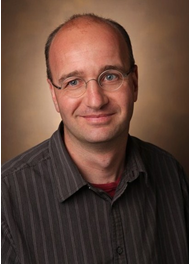
Claus Schneider, Ph.D.
Professor, Department of Pharmacology
- : claus.schneider@vanderbilt.edu
- : 615-343-9539
- :
514A Robinson Research Building
2220 Pierce Avenue
Nashville, Tennessee - 37232-6600 - : Claus Schneider, Ph.D. - CV
Research Description
We are studying biotransformations of small molecules in vitro and in vivo in the context of human health and disease. We determine the structures of novel metabolites, the enzymes and reaction mechanisms involved in their formation, and quantify their abundance in vivo in animals and humans. We also investigate the biological activity of the newly identified metabolites using cell culture and animal models.
We are currently interested in two groups of small molecule compounds, namely eicosanoids and polyphenols. Eicosanoids, including prostaglandins and leukotrienes, are derived from the ¿-6 polyunsaturated fatty acid, arachidonic acid. Polyphenols are bioactive compounds derived from plants and considered the major ingredients responsible for the health benefits of fruits and vegetables.
We are working on several specific projects:
- Discovery of novel eicosanoids
Two major enzymes involved in the biosynthesis of eicosanoids are 5-lipoxygenase (5-LOX) and cyclooxygenase-2 (COX-2), forming leukotrienes and prostaglandins, respectively. Leukotrienes and prostaglandins are the targets of widely used anti-asthma and anti-inflammatory/analgesic drugs. We have discovered a biosynthetic cross-over of the 5-LOX and COX-2 enzymes, resulting in the formation of novel eicosanoids that we have identified and named hemiketals (HK) HKE2 and HKD2. We are now studying the formation and role of HKE2 and HKD2 in animal and cellular models of inflammation. - Metabolism of eicosanoids
Prostaglandins are important lipid mediators but their abundance is difficult to quantify directly in blood or tissues. Therefore, the established approach is the quantification of their urinary metabolites. We are analyzing novel biochemical transformations involved in the metabolism of prostaglandins using purified enzymes and cultured cells but also animals and humans. Our studies have important ramifications for understanding the action of, for example, the cardioprotective activity of aspirin. - Biological activity of curcumin and other polyphenols
Our favorite polyphenol is curcumin, the yellow-orange ingredient of the spice curry. Curcumin has been used as an anti-inflammatory agent in traditional Asian medicine for centuries. When studying the degradation of curcumin (a rapid reaction in buffer), we discovered a large number of novel metabolites and identified their chemical structure and mechanism of formation. We are now testing the hypothesis that unstable reaction intermediates formed in the degradation of curcumin mediate the biological activity by binding to specific protein targets.
The lab uses HPLC and LC-MS techniques for analysis and quantification of metabolites. We rely on NMR for the structural identification of novel products. We use cell culture and animal models and also proteomics approaches to investigate the biological activities of novel metabolites that we discover. We maintain several active protocols to carry out studies in animals and humans.
* * *
Vanderbilt Faculty Profile
Vanderbilt Institute of Chemical Biology (VICB)